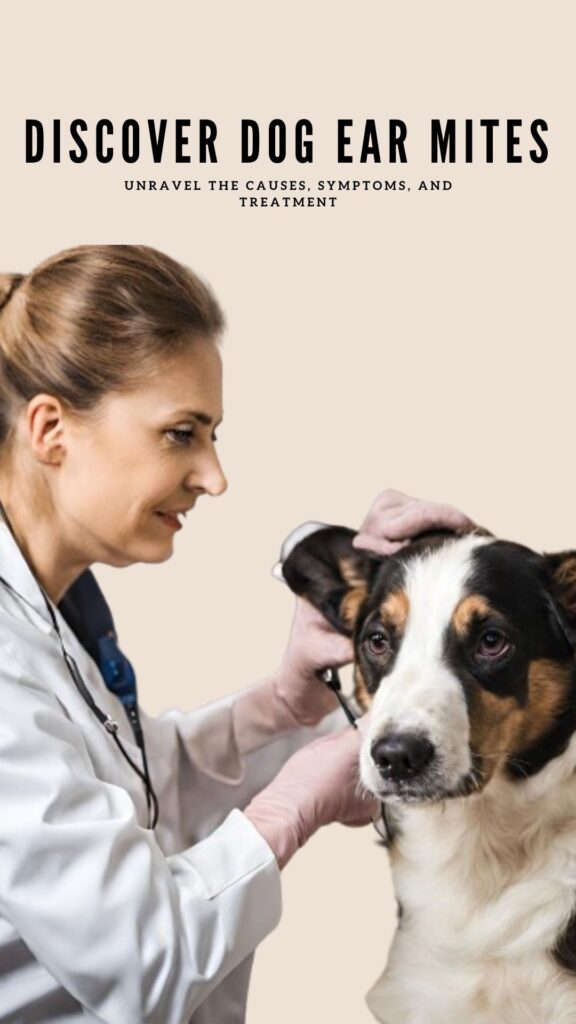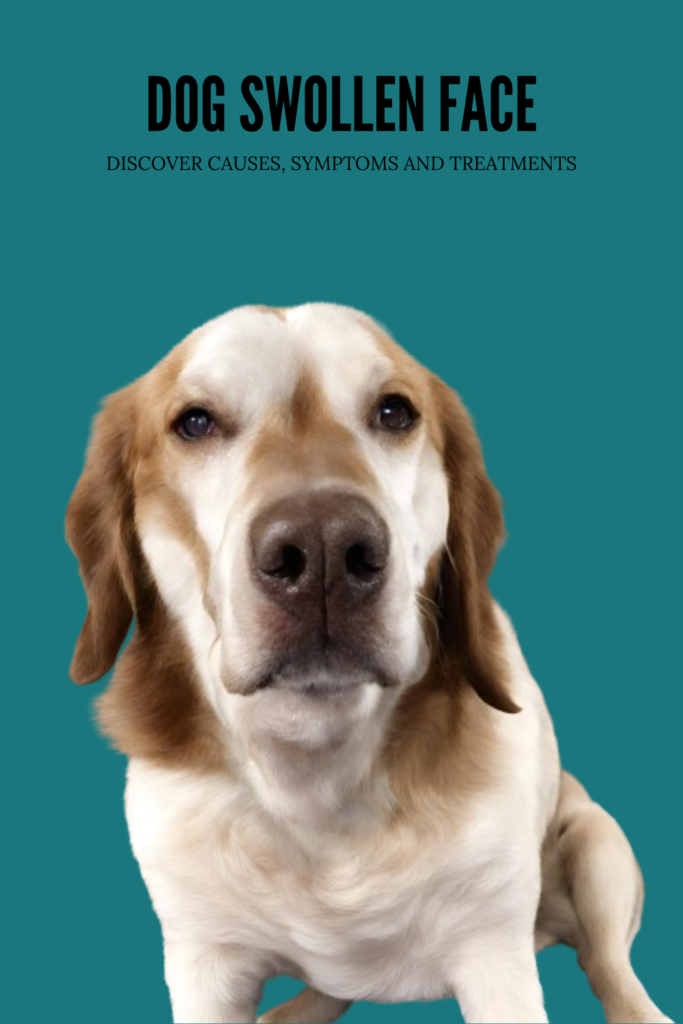Introduction
Tapeworm in Dogs is a topic that every responsible pet owner should be aware of. These pesky parasites have the potential to cause discomfort and health issues for our furry friends. But what exactly are tapeworms? How do dogs get infested with them? And most importantly, how can we treat and prevent their presence in our beloved canines?
In this article, we will delve into the world of tapeworms in dogs, exploring their causes, symptoms, and most effective treatment methods. So, if you’re a dog owner or simply interested in learning more about this common canine health concern, keep reading to educate yourself and protect your four-legged companions from the nuisance of tapeworms.
Understanding Tapeworms: A Common Parasite in Dogs
Tapeworms in dogs are a prevalent problem that many pet owners encounter. These parasites infect the intestines of dogs, causing discomfort and sometimes more severe health issues if left untreated. Understanding tapeworms and their life cycle is essential in preventing and treating infections.
Tapeworms are typically transmitted to dogs through the ingestion of fleas or infected animals, such as rodents or other mammals. Once inside the dog’s intestines, the tapeworms attach themselves to the intestinal wall, where they can grow and reproduce. Dogs with tapeworms may exhibit symptoms such as weight loss, diarrhea, and a dull coat.
Diagnosing tapeworms in dogs involves examining the dog’s feces for signs of tapeworm segments that resemble small grains of rice. These segments contain tapeworm eggs, which are shed by the dog and can infect other animals. Treating tapeworm infections in dogs usually involves administering deworming medication prescribed by a veterinarian. Additionally, preventing flea infestations through regular flea control measures is crucial in minimizing the risk of tapeworm infections.
In conclusion, tapeworms in dogs are a common parasite that can cause discomfort and health issues if not addressed. Pet owners should be aware of the risk factors, such as fleas and infected animals, and take preventive measures to protect their furry companions. Regular veterinary check-ups and prompt treatment of any suspected tapeworm infection are vital for maintaining the health and well-being of our beloved dogs.
How Do Dogs Get Tapeworms? Common Causes and Transmission
Tapeworms in dogs are a common health issue that many pet owners have to deal with. But how do dogs actually get tapeworms? There are several common causes and modes of transmission that pet owners should be aware of.
One of the most common ways for dogs to get tapeworms is through the ingestion of infected fleas. Fleas act as an intermediate host for tapeworm eggs. When a dog ingests a flea while grooming or biting at irritated skin, the tapeworm eggs inside the flea are released into the dog’s digestive system. Once inside, these eggs develop into adult tapeworms, attaching themselves to the intestinal wall and causing a range of health issues.
Another way for dogs to get tapeworms is through the consumption of infected wildlife or raw meat. Dogs that have access to the outdoors and live in areas with a high population of small mammals, such as mice or rabbits, are at a greater risk of contracting tapeworms. By consuming the organs or flesh of these infected animals, dogs unknowingly ingests tapeworm larvae, leading to a full-blown tapeworm infestation.
It’s important to note that tapeworms in dogs can also be transmitted from one dog to another through direct contact. This is especially true if one dog has a severe infestation and their environment, such as bedding or toys, become contaminated with tapeworm eggs. Dogs that are socialized in parks, daycare centers, or boarding facilities are more susceptible to contracting tapeworms from other dogs.
In conclusion, tapeworms in dogs can be contracted through various means, including the ingestion of infected fleas, consumption of infected wildlife or raw meat, and direct contact with infected dogs or contaminated environments. As pet owners, it’s crucial to practice good flea prevention, provide a balanced diet, and regularly deworm our furry friends to keep them healthy and tapeworm-free.
Identifying Tapeworm in Dogs: Symptoms and What to Look Out For
Tapeworms in dogs are a common parasitic infection that can cause discomfort and health issues if left untreated. Identifying tapeworm symptoms early on is crucial in preventing further complications. One of the most obvious signs of tapeworm infection is the presence of small, rice-like segments in your dog’s feces or around the anus. These segments are actually tapeworm egg packets and can easily be spotted with the naked eye. It is important to note that not seeing these segments doesn’t necessarily mean your dog is free from tapeworms, as they may not always be visible.
Another symptom to look out for is excessive itching and discomfort around the anus. Tapeworms can cause irritation and itching, leading to your dog constantly licking or biting the area. If you notice your furry friend constantly scooting their bottom on the floor or constantly licking their rear end, it could be a sign of tapeworm infection. Additionally, tapeworms can sometimes cause weight loss or a change in appetite. If your dog suddenly starts losing weight or lacks interest in food, it is worth considering a possible tapeworm infection.
In some cases, tapeworms may also cause visible changes in your dog’s coat or overall appearance. A dull or dry-looking coat could indicate a tapeworm infestation. Furthermore, tapeworms can occasionally migrate to other organs, such as the liver or lungs, causing more severe symptoms. These can include vomiting, diarrhea, abdominal pain, and weakness. If your dog displays any of these symptoms, it is crucial to seek veterinary attention immediately, as these could be signs of a more serious tapeworm infection.
In conclusion, being vigilant and identifying tapeworm symptoms early on is essential in maintaining your dog’s health. Regular veterinary check-ups and deworming treatments can help prevent tapeworm infection, but if you suspect your dog may have tapeworms, it is important to consult your veterinarian for proper diagnosis and treatment. Remember, providing the best care for your furry companion includes staying informed about common health issues like tapeworms and taking necessary precautions to keep them healthy and parasite-free.
The Importance of Prompt Treatment for Tapeworms in Dogs
Tapeworms in dogs are a common parasite that can cause significant harm if left untreated. These parasites are often contracted through the ingestion of fleas or infected prey, and can lead to a variety of health issues for our furry friends. It is crucial for pet owners to recognize the signs of tapeworm infestation and seek prompt treatment to ensure the well-being of their beloved companions.
One of the most noticeable symptoms of tapeworms in dogs is the presence of small, rice-like segments in their feces or around the anus. These segments contain tapeworm eggs and can often be seen moving. Additionally, dogs with tapeworms may experience weight loss, decreased appetite, and a rough, unkempt coat. If left untreated, these parasites can cause more serious complications such as weakness, anemia, and even intestinal blockage.
Prompt treatment for tapeworms in dogs is essential for two main reasons. Firstly, it helps to alleviate any discomfort or health issues that the parasites may be causing. By eliminating the tapeworms, the dog can regain their appetite, improve their coat condition, and restore their overall well-being. Secondly, treating tapeworms in dogs is important to prevent the spread of the parasites to other pets or humans. Certain species of tapeworms, such as Dipylidium caninum, can be transmitted to humans, posing a potential health risk.
There are several treatment options available for tapeworms in dogs, including oral medications and topical treatments. It is crucial to consult with a veterinarian to determine the most suitable treatment for your dog, based on their size, age, and overall health. Additionally, preventive measures such as maintaining a clean living environment for your pet, regular flea control, and proper hygiene practices can help reduce the risk of tapeworm infestation.
In conclusion, recognizing the signs of tapeworms in dogs and seeking prompt treatment is of utmost importance. The sooner these parasites are eradicated, the faster a dog can recover from any health issues they may be experiencing. Furthermore, treating tapeworms not only improves the individual dog’s well-being but also prevents the parasites from spreading to other pets or individuals. Remember to consult with a veterinarian for proper diagnosis and treatment options if you suspect your dog may have tapeworms.
Effective Treatment Options for Tapeworms in Dogs
Tapeworms in dogs are a common problem that can cause discomfort and health issues for our four-legged friends. It is crucial to address this issue promptly and effectively to ensure the well-being of our furry companions. Fortunately, there are several treatment options available to eliminate tapeworms from dogs and promote their overall health.
One of the most common and effective treatments for tapeworms in dogs is the use of deworming medications. These medications are available in various forms, including tablets, chewables, and spot-on treatments. They work by killing the tapeworms and allowing them to pass out of the dog’s system naturally. It is important to follow the recommended dosages and treatment duration as prescribed by a veterinarian to ensure the complete eradication of tapeworms.
Additionally, maintaining proper hygiene and sanitation practices can help prevent tapeworm infestations in dogs. Regularly cleaning your dog’s living area, including bedding, toys, and food bowls, can reduce the risk of tapeworm eggs being ingested. Practicing good hygiene yourself, such as washing your hands after handling your dog or cleaning up their waste, is also important to minimize the risk of transmission.
Another treatment option for tapeworms in dogs is flea control. Fleas are a common source of tapeworm infestations, as they serve as intermediate hosts for tapeworm larvae. Using flea preventives and regularly treating your dog for fleas can help break the tapeworm cycle and reduce the likelihood of reinfestation.
In conclusion, tapeworms in dogs can be effectively treated through the use of deworming medications, practicing good hygiene, and maintaining flea control. If you suspect your dog has tapeworms or notice any signs of infestation, it is essential to consult with a veterinarian for an accurate diagnosis and appropriate treatment plan. By promptly addressing tapeworms and implementing preventive measures, you can ensure the health and well-being of your beloved canine companion.
Preventing Tapeworm Infections: Tips for Keeping Your Dog Parasite-Free
Tapeworms in dogs can be a pesky and uncomfortable problem. These parasitic creatures can cause a range of issues including weight loss, diarrhea, and even anemia if left untreated. However, there are steps you can take to prevent your beloved pet from contracting tapeworm infections.
First and foremost, regular deworming is crucial for preventing tapeworms in dogs. Consult with your veterinarian to determine the appropriate deworming schedule for your specific breed and age of dog. A comprehensive deworming regimen will not only target tapeworms but also other common parasites such as roundworms and hookworms.
Another important measure is to keep your dog’s living area clean. Regularly remove feces from your yard and dispose of it properly. This will help to prevent potential sources of infection as tapeworm eggs can be present in the feces of infected dogs. Additionally, ensure that your dog’s food and water bowls are clean and sanitized regularly.
Flea control is also essential in preventing tapeworm infections. Fleas are an intermediate host for tapeworms, meaning they ingest tapeworm eggs and become carriers. When your dog ingests a flea during grooming, the tapeworm eggs are released into their system. Therefore, it is crucial to use flea preventives recommended by your veterinarian to keep your dog free from these pesky parasites.
Remember, prevention is always the best approach when it comes to tapeworms in dogs. By maintaining a regular deworming schedule, keeping your dog’s living area clean, and implementing effective flea control measures, you can ensure that your furry friend stays parasite-free and happy.
Can Humans Get Tapeworms from Dogs? Debunking the Myth
Tapeworms are a common parasite that can infest the intestines of various animals, including dogs. However, there is a persistent myth that humans can contract tapeworms from their canine companions. Let’s debunk this myth once and for all.
First and foremost, it’s essential to understand that the species of tapeworms found in dogs (Dipylidium caninum) are not the same as those that infect humans (such as Taenia solium). These tapeworms have different lifecycles and hosts, meaning they cannot be transmitted directly from one species to another.
Furthermore, the transmission of tapeworms in dogs occurs through the ingestion of infected fleas. Dogs may accidentally swallow fleas during grooming or by ingesting contaminated soil or feces. In contrast, humans do not have the same habits or interactions with fleas, significantly reducing the risk of transmission.
To put it simply, the chances of a person contracting tapeworms from their dog are incredibly rare. It would require the unlikely scenario of ingesting an infected flea or directly handling infected feces without washing hands afterward. By practicing good hygiene, keeping pets properly treated for fleas, and ensuring their living environment is clean, the risk becomes virtually non-existent.
In conclusion, it’s important to separate fact from fiction when it comes to tapeworms in dogs. Humans cannot contract tapeworms from their furry friends under normal circumstances. Remember to consult with a veterinarian if you have any concerns about your dog’s health and follow appropriate preventive measures to ensure both your pet and your family remain tapeworm-free.
Frequently Asked Questions About Tapeworms in Dogs
Tapeworms in dogs can be a common concern for dog owners. These pesky parasites can affect the health of our furry friends if left untreated. In this article, we’ll address some frequently asked questions about tapeworms in dogs.
1. What are tapeworms and how do dogs get them?
Tapeworms are long, flat parasites that live and feed inside the intestines of dogs. Dogs can get tapeworms by ingesting infected flea larvae or by consuming infected prey such as birds, rodents, or rabbits. It’s important to note that tapeworms cannot be directly passed from one dog to another.
2. What are the symptoms of tapeworm infection in dogs?
One of the common signs of tapeworms in dogs is the presence of small, rice-like segments near the dog’s rear end or in their stool. These segments are actually tapeworm eggs and can be seen moving. Other symptoms may include itching around the anus, weight loss, vomiting, and diarrhea. However, some infected dogs may not show any signs at all.
3. How can tapeworm infections be prevented and treated?
Prevention is crucial in keeping tapeworms at bay. Regular flea control is important as fleas serve as an intermediate host for tapeworms. It’s also essential to keep your dog away from potential sources of infection, such as dead animals or rodents. To treat tapeworm infections, your veterinarian will prescribe an appropriate deworming medication. It may also be necessary to address any underlying flea infestations.
In conclusion, tapeworms can be a nuisance for our beloved dogs. By understanding the causes, symptoms, and treatment options for tapeworm infections, we can take the necessary steps to protect our furry friends from these pesky parasites. Remember to consult your veterinarian for proper diagnosis and treatment recommendations if you suspect your dog has tapeworms.
Tapeworms and Your Dog’s Health: Risks and Complications
Tapeworms in dogs are a common health concern that every dog owner should be aware of. These parasites can make your furry friend sick and lead to serious complications if left untreated. Understanding the risks and complications associated with tapeworms is crucial for maintaining your dog’s health and well-being.
One of the primary risks of tapeworms in dogs is the transmission to humans. While dogs can become infected through ingesting fleas or small mammals, humans can contract tapeworms from their infected pets. This zoonotic disease can cause digestive issues, weight loss, and even neurological symptoms in humans. Therefore, it is essential to protect your dog from these parasites not only for their own health but also for the safety of your entire family.
Complications arising from tapeworm infestations in dogs can vary. Malnutrition is a common complication as the parasites compete for essential nutrients, leading to weight loss and weakness. In severe cases, tapeworms can cause intestinal blockages, resulting in vomiting, diarrhea, and even death if not promptly treated. Additionally, a weakened immune system due to the constant presence of tapeworms can make your dog more susceptible to other infections and illnesses.
Prevention and treatment are the keys to safeguarding your dog’s health from tapeworms. Regularly checking for fleas and promptly treating any infestations can help reduce the chances of your dog becoming infected. Additionally, maintaining good hygiene practices such as washing your hands after handling your dog and thoroughly cooking meats can help prevent the transmission of tapeworms to humans.
In conclusion, tapeworms in dogs pose significant risks and complications that should not be ignored. By understanding the dangers, taking preventive measures, and seeking prompt treatment when needed, you can protect your dog’s health and ensure a happy and parasite-free life for your furry companion. Remember, a healthy dog means a happy dog!
Maintaining a Parasite-Free Environment for Your Dog’s Well-being
As a dog owner, it’s important to be proactive in maintaining a parasite-free environment for your furry friend’s well-being. One of the most common parasites that dogs can contract is tapeworms. These flatworms can pose serious health risks to your pet if left untreated. Thankfully, there are simple steps you can take to prevent tapeworm infestations and keep your dog healthy.
Regularly deworming your dog is crucial in preventing tapeworms. Consult your veterinarian about an appropriate deworming schedule based on your dog’s age, activity level, and geographic location. This will help eliminate any existing tapeworms and prevent future infestations. Additionally, it’s important to thoroughly clean your dog’s living space, including their bedding and toys, to remove any potential tapeworm eggs or larvae.
Fleas are a common carrier of tapeworm larvae, so taking steps to prevent flea infestations can also help in maintaining a parasite-free environment. Use flea control products that are safe for your dog and regularly inspect their fur for any signs of fleas. Additionally, keeping your home clean and vacuuming regularly can help eliminate fleas and prevent tapeworm transmission to your dog.
Ensuring a parasite-free environment for your dog is vital for their overall well-being. By staying vigilant and taking preventative measures, such as regular deworming and flea control, you can minimize the risk of tapeworms in dogs. Remember to consult your veterinarian for proper guidance and to address any concerns regarding your dog’s health and potential parasite infestations. Your furry friend will thank you for providing them with a safe and healthy environment to thrive in.













